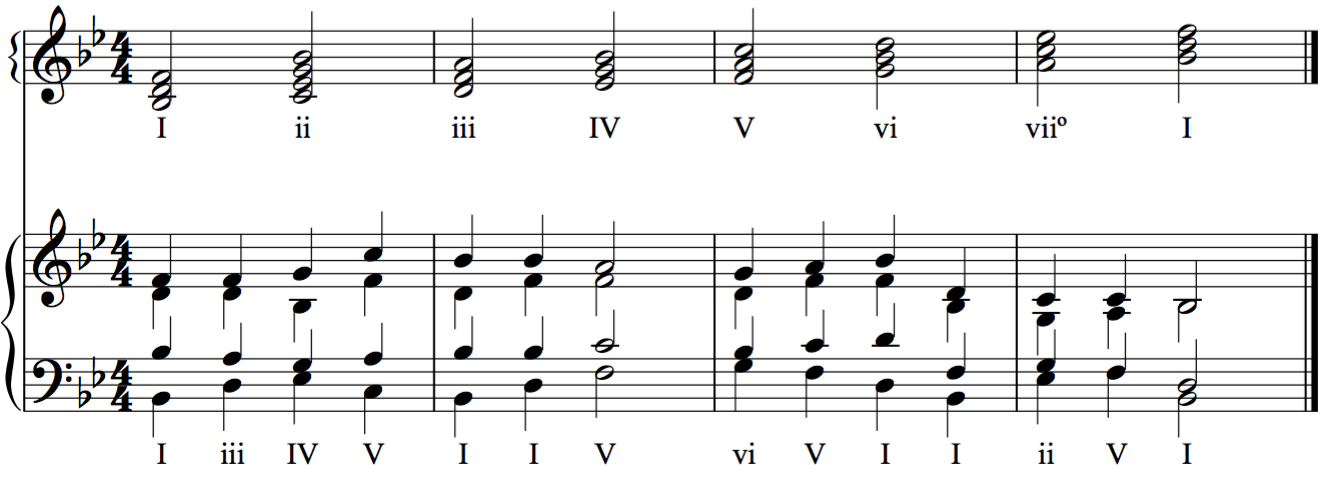
Building triads on top of each note of a scale will produce chords of different qualities. These chords are identified using Roman numerals.
The number used is determined by the root. If the root is scale degree 1 (the tonic), a Roman numeral I/i is used. A Roman numeral II/ii is used if the root is scale degree 2 (the supertonic), and so on. Capital letters are used for major or augmented chords, and lower-case letters are used for minor or diminished chords.
Since the intervals within a major scale are the same in every key, the chord qualities are the same in any major key.

The chord qualities are different in a minor key. Note that the harmonic minor is generally used.

The harmonic structure of a piece can be broken down using a Roman Numeral Analysis by following these steps:
